by Ananyaa Sathyanarayana // Apr. 9, 2024
This year, the Turkish Pavilion at the Venice Biennale will feature works by established artist Gülsün Karamustafa. Considered one of Turkey’s most influential and outspoken contemporary artists, Karamustafa, in her over five-decade-long career, has explored the modernization of Turkey and its effects on the population. In addition, her work offers insightful commentary on issues including gender, displacement, migration, exile, ethnicity, feminism and memory.
‘Hollow and Broken: A State of the World’—Karamustafa’s exhibition for the Biennale—presents a conversation around our contemporary socio-political moment, shaken by wars, forced migration and climate catastrophe. In our discussion with the artist, we address the medium she chose to work with and how it affects the interpretation of the exhibition, as well as the show’s relationship to the theme of the wider Biennale, ‘Stranieri Ovunque – Foreigners Everywhere.’
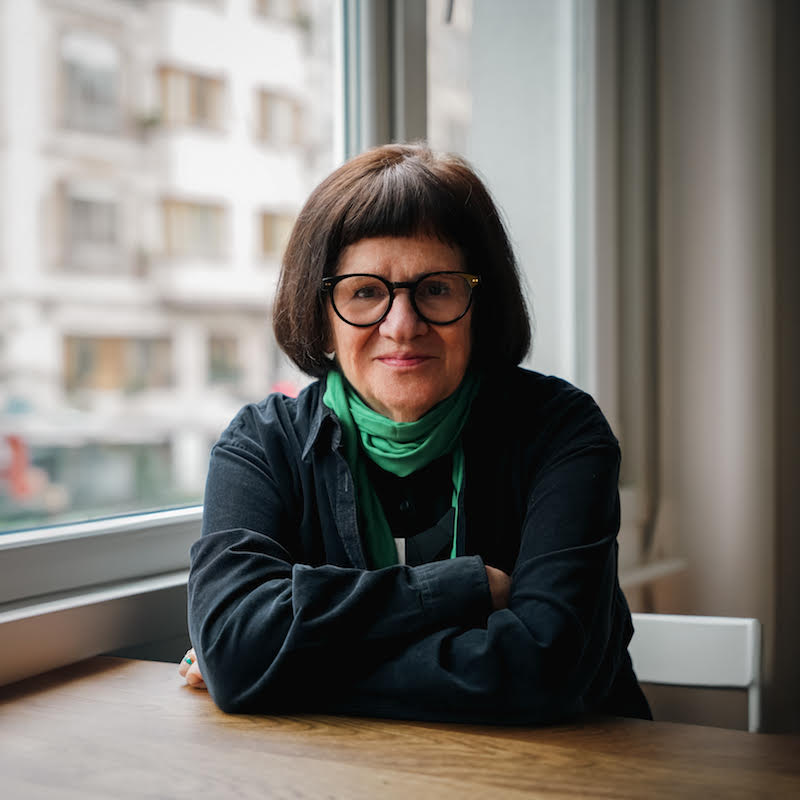
Gülsün Karamustafa, portrait // Photo by Fatih Yilmaz
Ananyaa Sathyanarayana: Can you tell us about the significance of the title of your exhibition—’Hollow and Broken: A State of the World’—for the Biennale this year?
Gülsün Karamustafa: When I was informed about participating in this year’s Venice Biennale, I was absolutely drowned and choked by an overwhelming feeling about the state of the world, hollowed out to the core by wars, earthquakes, migration and nuclear peril unleashed at every turn, and threatening humankind while nature is ceaselessly scathed. The environment made me sick.
The conflict in Ukraine continued, and the devastating memory of the earthquake in the south of Turkiye and Syria in February 2023 that took more than 50,000 lives was creating an unbearable pain in our souls. Witnessing yet another war in October, without a break, was more than one could bear.
I wished to refer to the hollowness and the brokenness of a world that has turned into a battlefield, an endlessly shifting ground.
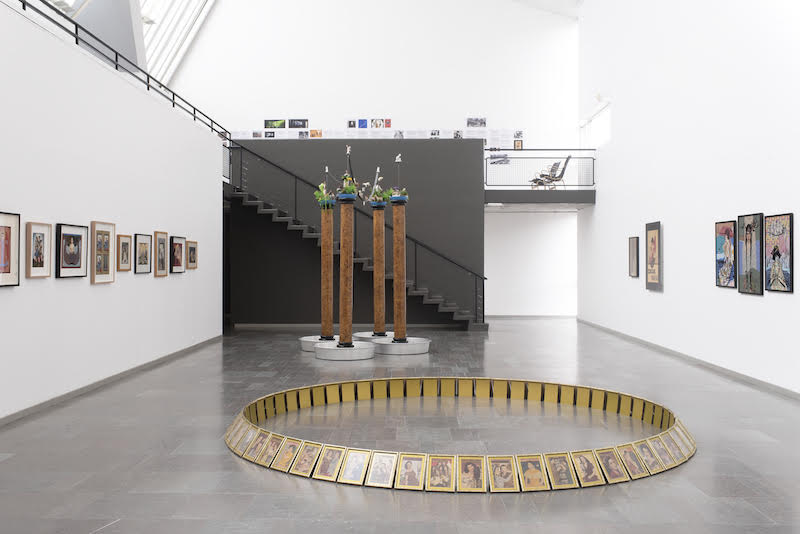
Gülsün Karamustafa: ‘After the Cosmopolis,’ 2022, Lund Konsthall // Copyright Lund Konsthall, courtesy of the artist
AS: Your work often features a historical narrative or your own personal experiences. What role do these elements play in your creative process and how do you balance between individual narratives and larger societal themes in your work?
GK: Yes, from time to time I refer to my personal experiences, as well as my personal images. This creates a space for me where I can freely speak about my own background, about the time period and the society that I belong to. To my surprise, each time I show these works internationally I receive interesting feedback that connects me to another geography in the world and makes me think that there is so much [we can] share in between.
AS: As an artist working with many different mediums, you chose to focus on your sculptural work for presentation in the Turkish Pavilion. Why do you feel that sculpture was the most useful medium to translate the themes of displacement, migration and exile that correlate with the Biennale’s curatorial theme ‘Foreigners Everywhere’?
GK: For the work I am preparing for Venice, I am trying to express myself with sculptural works. However, these won’t be the only works in my exhibition. I’ll also be showing a 14-minute film, which will accompany them. Initially, I thought about doing things differently. I considered creating an interactive piece that would blend better with the existing narrative. But I have to admit that when I got the offer for the Sale d’Armi venue, the artillery building of the Arsenale, where the arms were historically displayed, [I felt] I could express myself best through sculptural works. I was also sure that the film, which I edited together from a vast group of propaganda films that I licensed from the internet, would be the last word that would bind everything together.
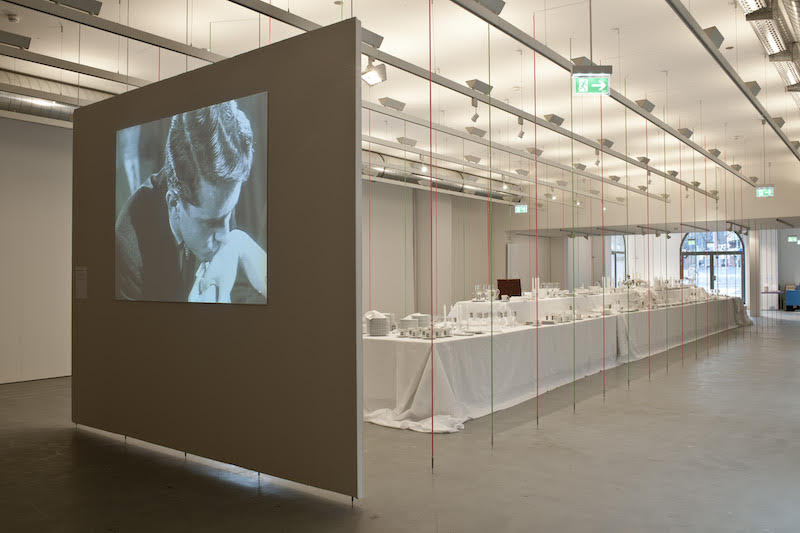
Gülsün Karamustafa: ‘Adab-i Muaşeret,’ 2011, Institüt für Auslandsbeziehungen // Photo by Frank Kleinbach
AS: What do you see as the role of art in addressing imminent global challenges? Why is it important for you to show your work in the context of the Biennale this year?
GK: I don’t like definitions that impose a specific role to the arts. I believe that art has the freedom to express itself, or we choose another way and opt for silence. Ultimately, both paths facilitate a communication between the creator and the viewer. It is an intimate moment that can arouse unexpected results, as well as feelings. The themes around big exhibitions or biennales are a given “starting point” for the artist, but it could never be predicted where these lead in the end.
When I had the offer to show in Venice this year, of course it was very pleasing, as Venice is a global platform that every artist would like to stand on. Also, it gave me the possibility to create a new work that I likely would not have the possibility of making come to life without such big support.
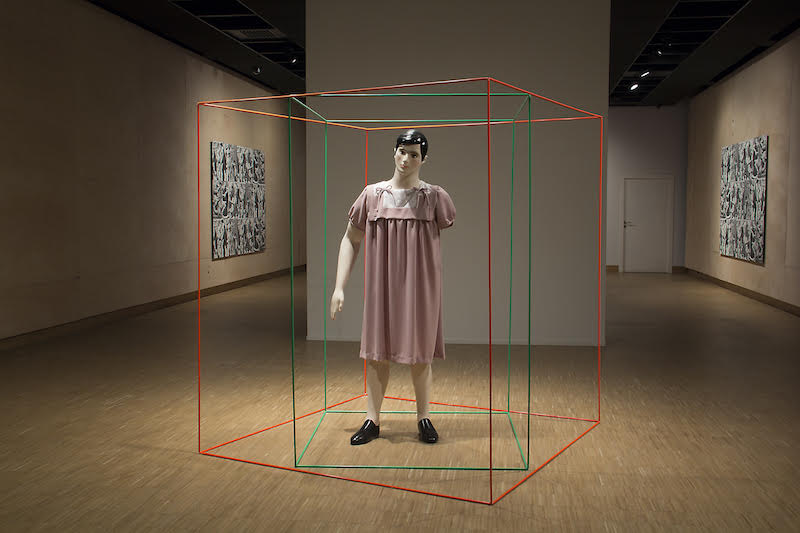
Gülsün Karamustafa: ‘Valdedilmis Bir Sergi,’ 2013-14, SALT Galata, Beyoğlu // Photo by Mustafa Hazneci
AS: You have had an artistic career spanning over five decades, exploring various themes like the modernisation of Turkey and pressing issues and socio-political injustices such as migration, displacement, exile, ethnicity, feminism and gender. What are some significant events or changes personally or politically that have most influenced your work?
GK: I always begin my work with my own interpretations, drawing from the points that I know the best. I am an observer and anything related to human life and experience has the potential to enter my field of vision and manifest as an expression to settle into my works. I don’t adhere to specific intentions or boundaries to stick to an issue and speak about it continuously, but my interests sometimes guide me to points that I find myself revisiting.
Subjects such as migration, displacement, exile, ethnicity, feminism and gender that you mention, have all, at various points, found their way into my artistic expressions. I remain curious about what will attract me in the following years, as life introduces and subtracts new circumstances as it passes by. I also love the freedom of using numerous mediums together when the time comes.
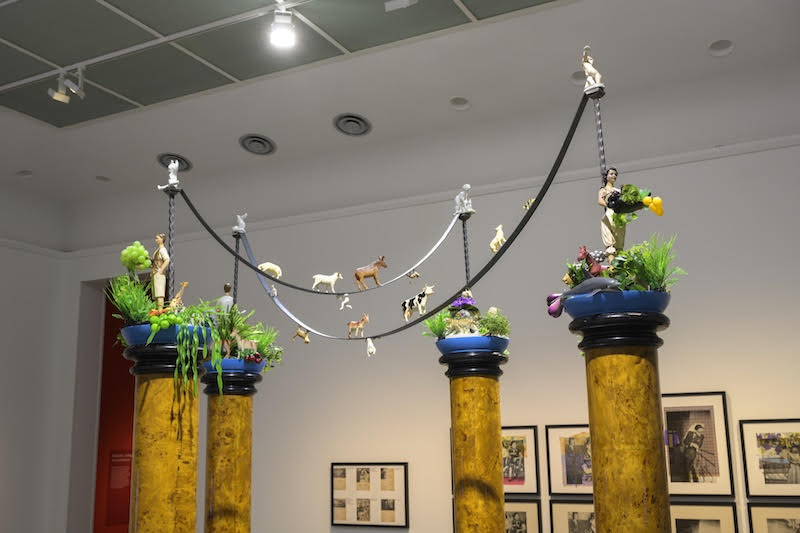
Gülsün Karamustafa: ‘Cefakar Sehir,’ 2021, ‘After the Cosmopolis’ at Van Abbemuseum // Photo by Peter Cox
AS: Can you talk about the book that will accompany your pavilion and what kind of reflections we can expect to find therein?
GK: The book proved to be an excellent companion to the exhibition, evolving in parallel with the artwork itself. Designed by prominent graphic designer, Esen Karol, and enriched with the input of the brilliant editor, Melis Çankara, it took shape as the work was developing. Packaged as a set of three items, it offers a wonderful experience to follow the contributions of 12 writers step-by-step, who delved into the materials I’ve used and envisioned the as-yet-unrealised venue through the description of mere sketches. The second book was more surprising, especially amidst my ongoing creative process, as it was on my works related to the Venice project. The third inclusion is a poster within an envelope, encapsulating all three items, which provides a third unexpected delight.
Exhibition Info
La Biennale di Venezia
Türkiye Pavilion: ‘Hollow and Broken: A State of the World’
Exhibition: Apr. 20–Nov. 24, 2022
iksv.org
Sala d’Armi, Arsenale di Venezia, 30122, Venezia VE, Italy, click here for map


























